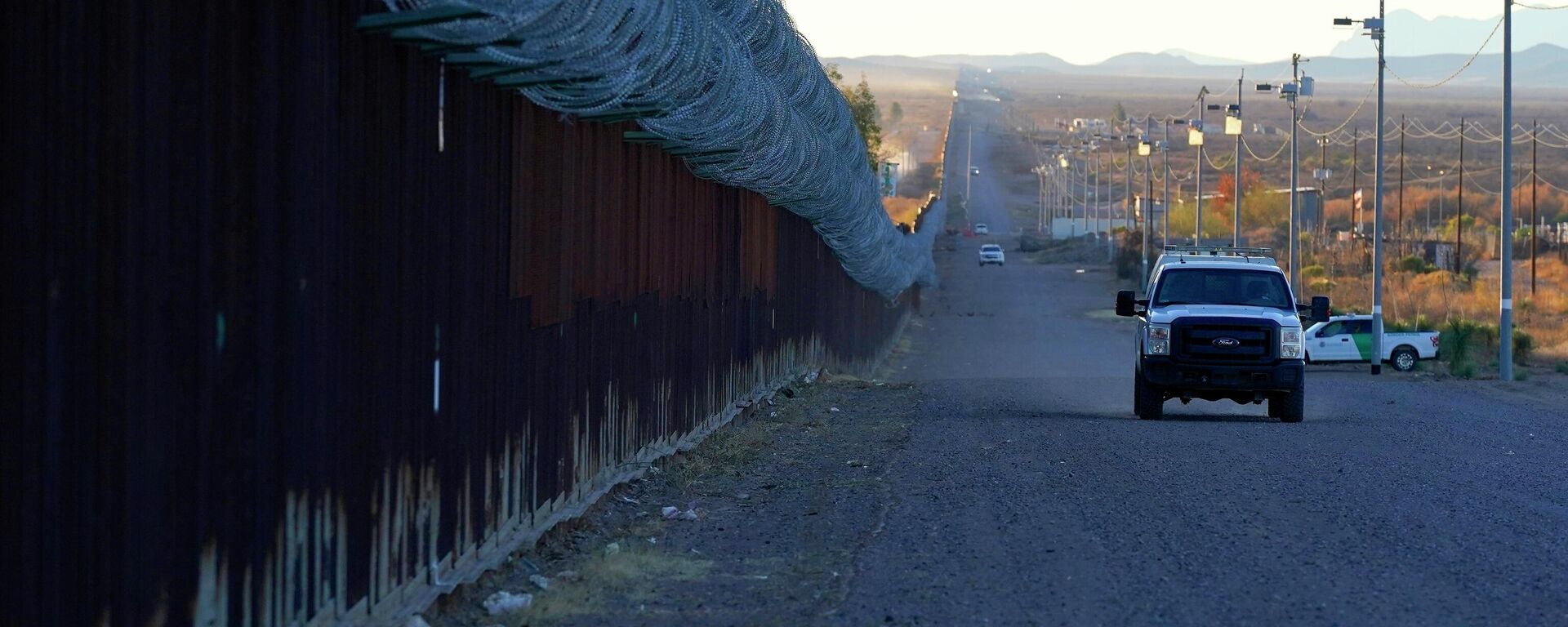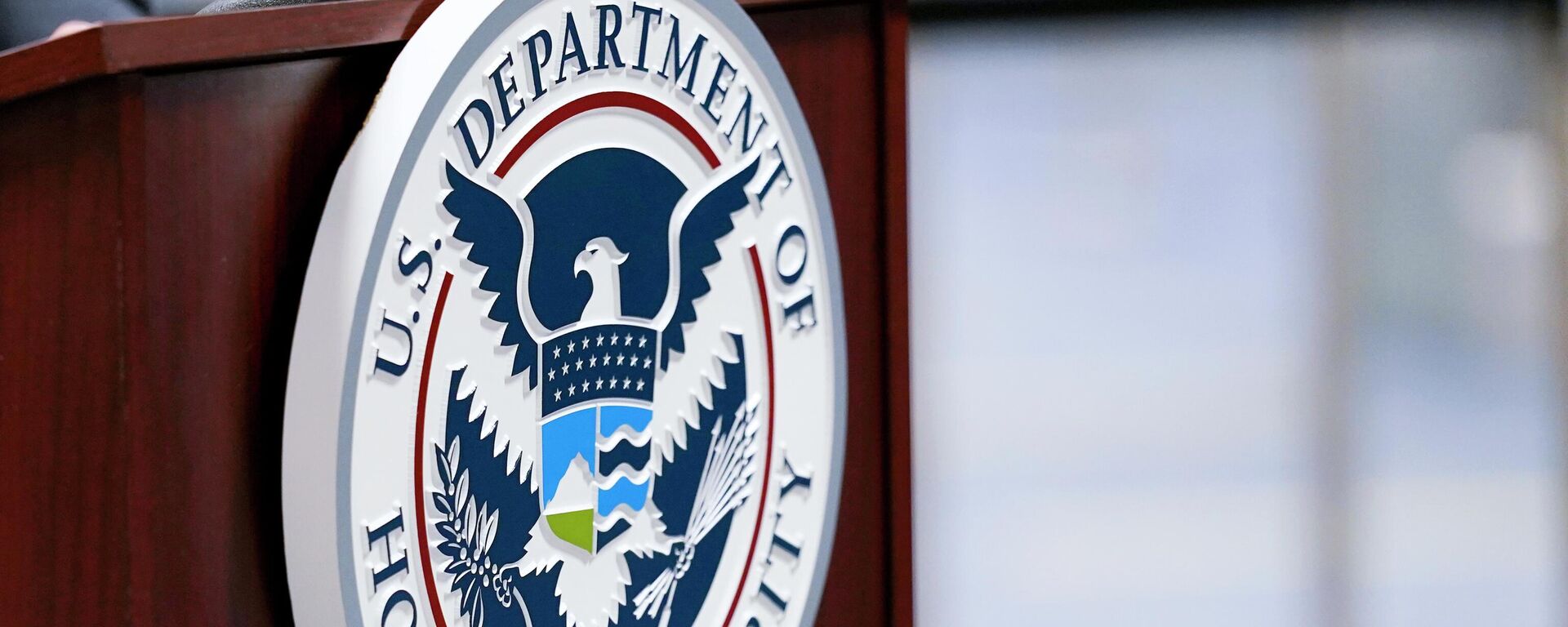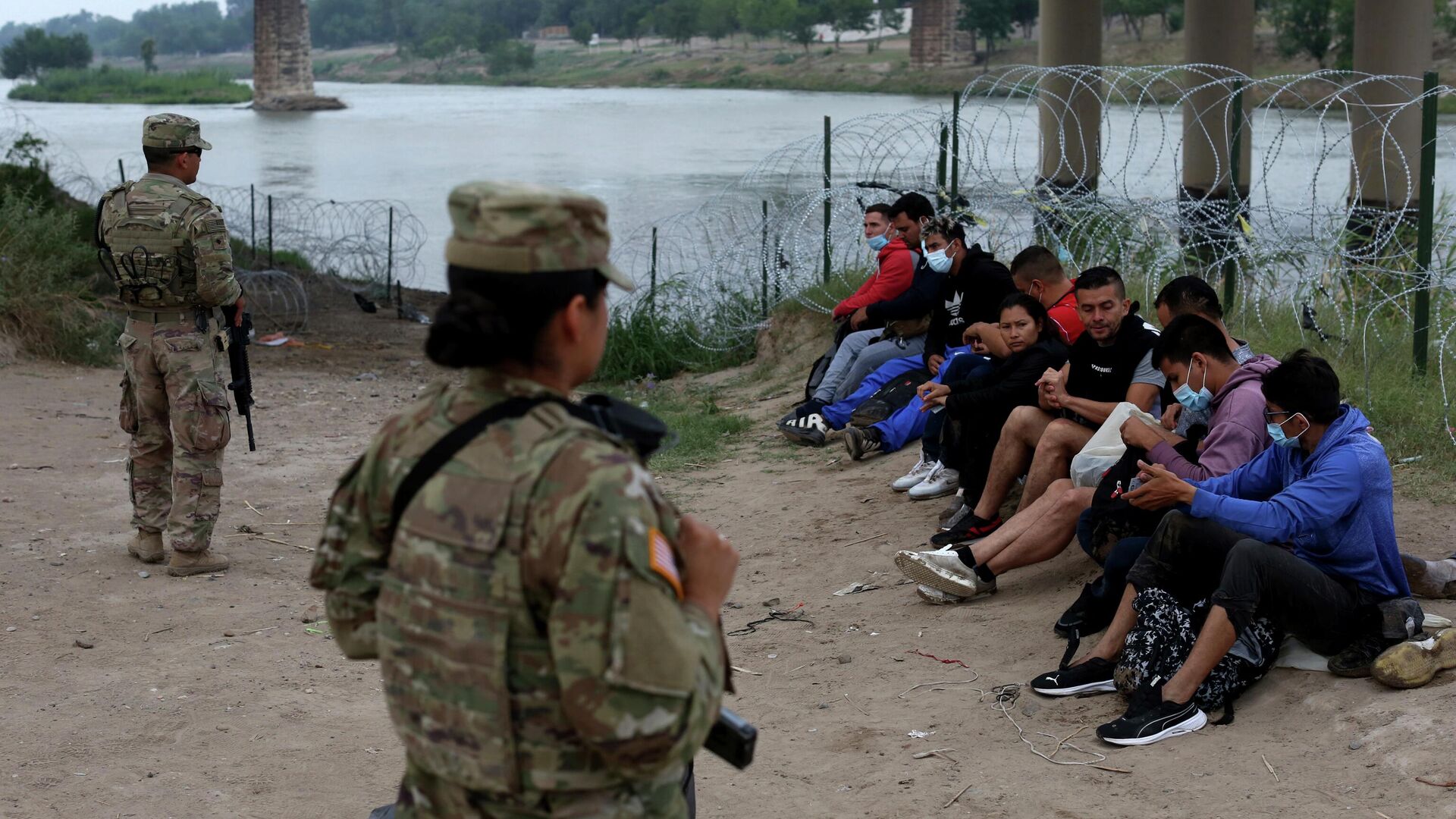https://sputnikglobe.com/20221222/title-42-how-uss-immigration-crisis-nearly-shut-down-the-government-and-left-pentagon-penniless-1105709082.html
Title 42: How US Immigration Crisis Nearly Shut Down the Government and Left the Pentagon Penniless
Title 42: How US Immigration Crisis Nearly Shut Down the Government and Left the Pentagon Penniless
Sputnik International
The deadlock in Congress over the fate of a Trump-era immigration measure threatened to shut down the government, halt aid to Ukraine, and leave America’s... 22.12.2022, Sputnik International
2022-12-22T18:28+0000
2022-12-22T18:28+0000
2022-12-22T18:48+0000
immigration
migrants
us border patrol
border
sputnik explains
https://cdn1.img.sputnikglobe.com/img/07e6/07/08/1097093217_0:160:3073:1888_1920x0_80_0_0_8a1cfef48703c29f3c1b4c04bb569b21.jpg
Senate leaders expressed hopes Thursday that they could reach an agreement on the $1.7 trillion omnibus bill – a massive, 4,155-page spending package which includes $858 billion in defense spending, and $772.5 billion for a range of other spending, from salaries for government employees to Veterans Administration medical care funding, to $44.9 billion in aid to Ukraine and $40.6 billion for natural disaster relief at home.The Biden administration began preparations to scrap Title 42 in early 2022, with expulsions using the order dropping nearly 50 percent during the Joe Biden presidency. In May, the US Centers for Disease Control (CDC) moved to terminate Title 42, deeming it “no longer necessary” since “the danger of further introduction, transmission or spread of COVID-19 into the United States from covered noncitizens…has ceased to be a serious danger to the public health.”However, a federal judge in Louisiana blocked the order, setting the stage for a legal battle in courts, and ultimately, on Capitol Hill. In November, another judge vacated Title 42, calling the policy arbitrary, capricious and in violation of the Administrative Procedure Act, an obscure federal statute governing federal regulatory processes, after the American Civil Liberties Union issued a lawsuit on behalf of asylum-seeking families. The policy was supposed to be aborted by December 21.The US Supreme Court intervened on Monday, ordering the administration to temporarily keep the policy in place before the highest court in the land had a chance to consider its legality. The Supreme Court’s intervention came after an emergency request by 19 Republican-led states, whose officials warned that Title 42’s abolition would further exacerbate the crisis at the southern border.How is Title 42 tied to the omnibus spending package? Utah Republican Senator Mike Lee held up the bill’s package by seeking an amendment into the spending bill to keep the border policy in place. Lee and other Republicans may have felt that since the omnibus is stuffed with pork anyway, it might as well include an amendment which could have some practical impact on the dire situation at the southern border. Democrats vehemently disagreed, citing a “difference of opinion on immigration policy” and suggesting the omnibus budget is no place for debate on the matter.How Did the US Reach This Point?Title 42 was a "last stand" of sorts for proponents of strong border control amid the Biden administration’s successes in dismantling most of its predecessors' other hardline immigration policies.In his first two months in office, President Biden issued close to a dozen immigration-related executive orders, including a halt on construction of Donald Trump’s signature border wall, an order revoking excluding undocumented immigrants from the census, a reversal of the Trump travel ban, an end to “harsh and extreme immigration enforcement,” and the cancellation of the "Remain in Mexico" policy, which required people seeking asylum in the US to stay in Mexico until their immigration court dates. Other measures included a commitment to restore the US asylum system, a rollback on a wealth test for would-be legal immigrants, and an order to rebuild the US refugee resettlement program. In addition, the White House hinted at the possibility of a pathway to citizenship for the 11+ million illegals already living in the US.In place of these restrictions, the White House promised to create a "smart" border, featuring AI, biometrics, facial recognition systems, drones, autonomous surveillance towers, infrared cameras, iris scanning, DNA analysis, radar, motion sensors, and other high-tech gear to replace a physical border wall with a digital one.The paradigm shift sparked the largest immigration crisis that the US has faced in decades, with border enforcement agents’ encounters in fiscal year 2022 topping two million people in October, and mayors in multiple cities, both near the border and in far-off locales such as New York, Chicago, and Washington, DC, declaring emergency measures to fight with the crisis (the latter three areas doing so after border states began busing migrants to their jurisdictions).Along with millions of people coming into the US requiring shelter, food, employment, and other assistance, the immigration crisis has brought with it a crime and drugs problem, with illicit fentanyl smuggling hitting new records, and gun crime, rape, kidnappings, assaults, murder, and human trafficking rates also experiencing a massive jump over the past two years.
https://sputnikglobe.com/20221220/texas-authorities-sent-400-troops-to-mexican-border-over-expected-influx-of-migrants-1105638786.html
https://sputnikglobe.com/20221128/us-air-marshals-say-chances-of-stopping-hijackings-being-demolished-by-deployment-to-mexico-border-1104802274.html
https://sputnikglobe.com/20221222/whats-fuelling-opioid-overdose-crisis-in-us-1105693306.html
Sputnik International
feedback@sputniknews.com
+74956456601
MIA „Rossiya Segodnya“
2022
News
en_EN
Sputnik International
feedback@sputniknews.com
+74956456601
MIA „Rossiya Segodnya“
Sputnik International
feedback@sputniknews.com
+74956456601
MIA „Rossiya Segodnya“
joe biden, border, title 42, border crisis, title 42, biden administration, immigration, migration
joe biden, border, title 42, border crisis, title 42, biden administration, immigration, migration
Title 42: How US Immigration Crisis Nearly Shut Down the Government and Left the Pentagon Penniless
18:28 GMT 22.12.2022 (Updated: 18:48 GMT 22.12.2022) The deadlock in Congress over the fate of a Trump-era immigration measure threatened to shut down the government, halt aid to Ukraine, and leave America’s gargantuan military without funding. What was the hullaballoo over Title 42 about? How did the crisis at the US’ southern border with Mexico reach this point? Sputnik explores.
Senate leaders expressed hopes Thursday that they could reach an agreement on the
$1.7 trillion omnibus bill – a massive, 4,155-page spending package which includes $858 billion in defense spending, and $772.5 billion for a range of other spending, from salaries for government employees to Veterans Administration medical care funding, to $44.9 billion in aid to Ukraine and $40.6 billion for natural disaster relief at home.
Despite everything at stake, the bill was held up by a battle over Title 42 – a Trump-era emergency public health measure which the Republican administration used to expel over 80 percent of the illegal immigrants caught coming into the United States on the pretext of the public health threat posed by the coronavirus pandemic.
The Biden administration began preparations to scrap Title 42 in early 2022, with expulsions using the order dropping nearly 50 percent during the Joe Biden presidency. In May, the US Centers for Disease Control (CDC)
moved to terminate Title 42, deeming it “no longer necessary” since “the danger of further introduction, transmission or spread of COVID-19 into the United States from covered noncitizens…has ceased to be a serious danger to the public health.”
However, a federal judge in Louisiana blocked the order, setting the stage for a legal battle in courts, and ultimately, on Capitol Hill. In November, another judge
vacated Title 42, calling the policy arbitrary, capricious and in violation of the Administrative Procedure Act, an obscure federal statute governing federal regulatory processes, after the American Civil Liberties Union issued a lawsuit on behalf of asylum-seeking families. The policy was supposed to be aborted
by December 21.The US Supreme Court
intervened on Monday, ordering the administration to temporarily keep the policy in place before the highest court in the land had a chance to consider its legality. The Supreme Court’s intervention came after an
emergency request by 19 Republican-led states, whose officials warned that Title 42’s abolition would further exacerbate the crisis at the southern border.
How is Title 42 tied to the omnibus spending package? Utah Republican Senator Mike Lee held up the bill’s package by seeking an amendment into the spending bill to keep the border policy in place. Lee and other Republicans may have felt that since the omnibus is
stuffed with pork anyway, it might as well include an amendment which could have some practical impact on the dire situation at the southern border. Democrats vehemently disagreed, citing a “difference of opinion on immigration policy” and
suggesting the omnibus budget is no place for debate on the matter.
The Lee amendment was defeated 50-47 in a vote Thursday morning, with all 50 Senate Democrats lining up in unison to vote it down, with three GOP senators failing to join their colleagues in trying to pass it.

20 December 2022, 11:05 GMT
How Did the US Reach This Point?
Title 42 was a "last stand" of sorts for proponents of strong border control amid the Biden administration’s successes in dismantling most of its predecessors' other hardline immigration policies.
In his first two months in office, President Biden issued
close to a dozen immigration-related executive orders, including a halt on construction of Donald Trump’s signature border wall, an order revoking excluding undocumented immigrants from the census, a reversal of the Trump travel ban, an end to “harsh and extreme immigration enforcement,” and the cancellation of the "Remain in Mexico" policy, which required people seeking asylum in the US to stay in Mexico until their immigration court dates. Other measures included a commitment to restore the US asylum system, a rollback on a wealth test for would-be legal immigrants, and an order to rebuild the US refugee resettlement program. In addition, the White House hinted at the possibility of a pathway to citizenship for the 11+ million illegals already living in the US.

28 November 2022, 21:35 GMT
In place of these restrictions, the White House promised to create a
"smart" border, featuring AI, biometrics, facial recognition systems, drones, autonomous surveillance towers, infrared cameras, iris scanning, DNA analysis, radar, motion sensors, and other high-tech gear to replace a physical border wall with a digital one.
The paradigm shift sparked the largest immigration crisis that the US has faced in decades, with border enforcement agents’ encounters in fiscal year 2022 topping two million people in October, and mayors in multiple cities, both near the border and in far-off locales such as New York, Chicago, and Washington, DC, declaring emergency measures to fight with the crisis (the latter three areas doing so after border states began busing migrants to their jurisdictions).
Along with millions of people coming into the US requiring shelter, food, employment, and other assistance, the immigration crisis has brought with it a crime and drugs problem, with illicit
fentanyl smuggling hitting new records, and gun crime, rape, kidnappings, assaults, murder, and human trafficking rates also experiencing a
massive jump over the past two years.

22 December 2022, 15:24 GMT




